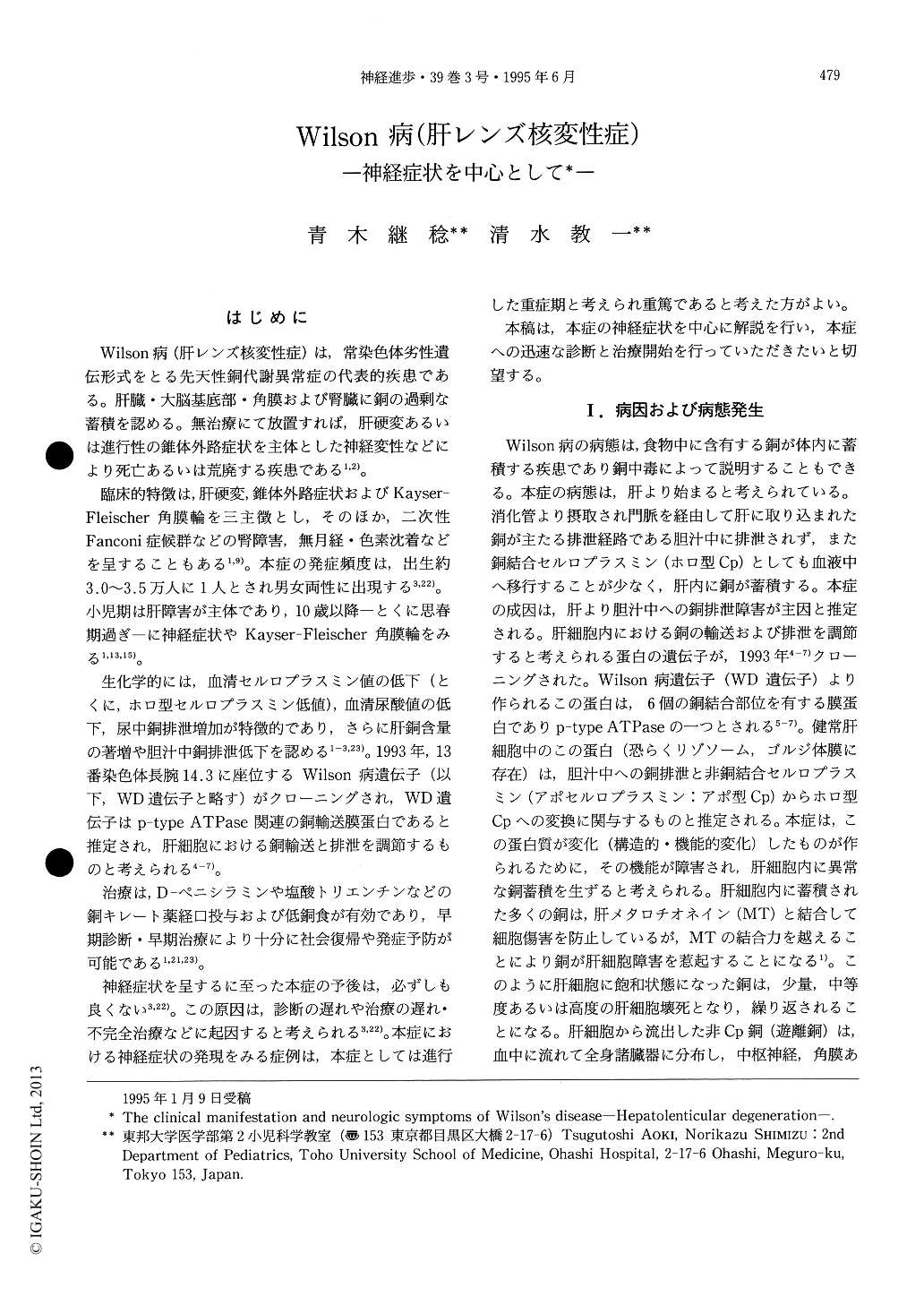Japanese
English
- 有料閲覧
- Abstract 文献概要
- 1ページ目 Look Inside
はじめに
Wilson病(肝レンズ核変性症)は,常染色体劣性遺伝形式をとる先天性銅代謝異常症の代表的疾患である。肝臓・大脳基底部・角膜および腎臓に銅の過剰な蓄積を認める。無治療にて放置すれば,肝硬変あるいは進行性の錐体外路症状を主体とした神経変性などにより死亡あるいは荒廃する疾患である1,2)。
臨床的特徴は,肝硬変,錐体外路症状およびKayser-Fleischer角膜輪を三主徴とし,そのほか,二次性Fanconi症候群などの腎障害,無月経・色素沈着などを呈することもある1,9)。本症の発症頻度は,出生約3.0~3.5万人に1人とされ男女両性に出現する3,22)。小児期は肝障害が主体であり,10歳以降―とくに思春期過ぎ―に神経症状やKayser-Fleischer角膜輪をみる1,13,15)。
In about 30 to 40 per cent of the patients with Wilson's disease, the first clinical manifestation of the illness is neurologic. Neurologic manifestations begin as early as 8 years of age. In our experience, these limits have been 6 years and 45 years. Although excess copper is ubiquitous in the brain, the neurologic disturbances are almost completely limited to the motor system. Sensory abnormalities or significant muscular weakness are never seen, and reflex changes are quite uncommon.

Copyright © 1995, Igaku-Shoin Ltd. All rights reserved.


